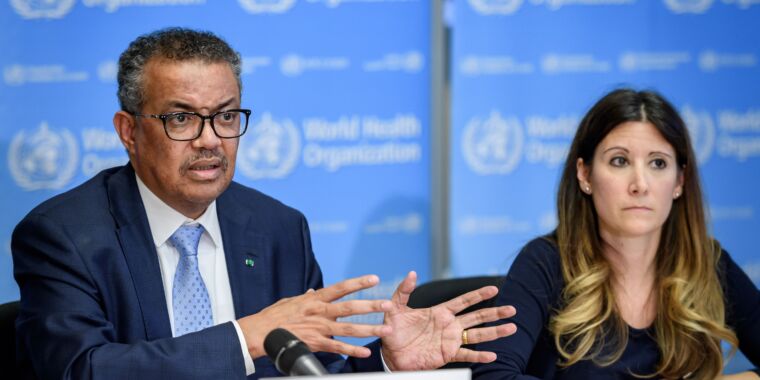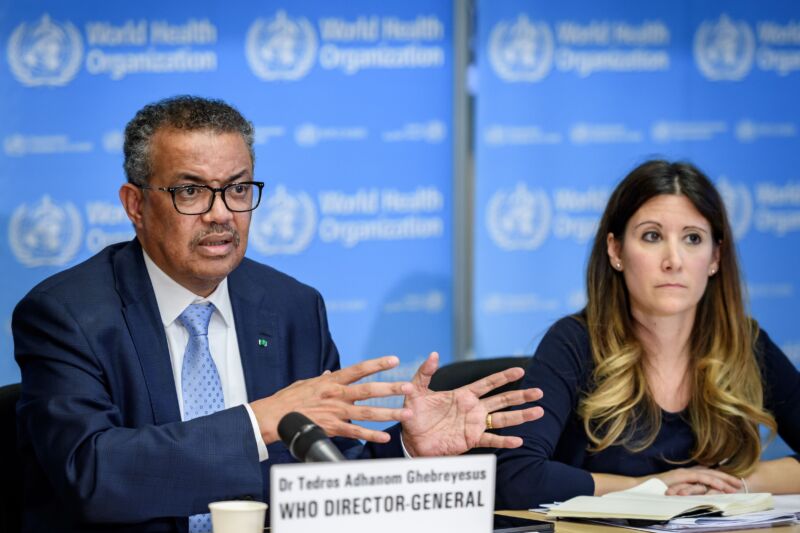

After weeks of decline, the global tally of COVID-19 cases is now ticking back up. This uptick is raising concerns that we could see yet another surge amid relaxed health measures and the rise of the omicron subvariant BA.2, the most highly transmissible version of the virus identified to date.
According to the latest COVID-19 situation report by the World Health Organization, the global tally of new weekly cases increased 8 percent for the week ending on March 13, totaling over 11 million cases. Cases are increasing in the Western Pacific, European, and African regions. Korea, Vietnam, Germany, France, and the Netherlands reported the highest numbers of new cases.
“These increases are occurring despite reductions in testing in some countries, which means the cases we are seeing are just the tip of the iceberg,” director-general of the World Health Organization, Dr. Tedros Adhanom Ghebreyesus, said in a press briefing Wednesday.
Some countries, such as China, are now grappling with their first surge of omicron cases, while other countries, such as those in Europe, are seeing a resurgence of cases amid the rise of BA.2. The subvariant is thought to be around 30 percent to 40 percent more transmissible than the initial omicron variant that spread worldwide, BA.1.
“Each country is facing a different situation with different challenges, but the pandemic is not over,” Dr. Tedros said.
The good news about BA.2 is that vaccines and most treatments work just as well against the new subvariant as they did against BA.1. And studies have suggested that past infection with BA.1 can offer protection from an infection with BA.2. Additionally, BA.2 does not appear to be causing more severe disease than seen with BA.1.
But BA.2 is more transmissible and quickly overtaking BA.1 as the globally dominant variant. In Wednesday’s press briefing, WHO’s technical lead on COVID-19, Maria Van Kerkhove, noted that, in the past 30 days, 99.9 percent of all SARS-CoV-2 viruses sequenced globally were omicron. Of those sequenced omicron viruses, about 75 percent was BA.2, and the remaining 25 percent was BA.1.
“Not over”
She added a note of caution, saying that the data being collected now is faltering. “We are seeing an increase in the proportion of BA.2 that is detected. However, the amount of testing that is happening worldwide… is dropping substantially,” Van Kerkhove said. “So our ability to track this virus—our ability to track BA.2—is compromised because testing is reduced, and you can’t sequence those who you don’t test.”
The significant decline in testing worldwide is coupled with many countries’ decisions to relax mitigation efforts, such as mask wearing and physical distancing. Many experts have noted that the combination of relaxed measures and waning protection from vaccination and boosters are fueling the spread of BA.2.
The US is not yet seeing an increase in cases linked to BA.2. However, the rise of cases in Europe is expected to foreshadow a rise in the states. And already, nearly 40 percent of wastewater monitoring sites in the US have detected rises in SARS-CoV-2 levels. Wastewater monitoring picks up virus that is shed in feces, which is one of the earliest signs of infection. The monitoring acts as an early warning system for rising cases.
Experts don’t expect that BA.2 will create a surge rivaling that seen with BA.1 in January. However, cases are expected to rise in the coming weeks, requiring sustained vigilance.
On Tuesday, Biden administration officials put out a plea to Congress for more COVID-19 funding, including for continued testing and surveillance. Senior officials told reporters that, without additional funds, testing capacity could be lost in June and surveillance efforts would be scaled back. “With reduced capability to perform adequate surveillance, the country will be prone to being ‘blindsided’ by future variants,” the White House said in a summary of the consequences of the funding shortage. Administration officials also said that they do not have enough money to secure additional booster doses if fourth shots become widely recommended. Testing, access to therapies, and global vaccine donations would also suffer without more funding. The administration is asking Congress for $22.5 billion.